|
|
Greetings!
As you probably are aware, this September was the hottest on record in NOAA's 174 years of climate recording, continuing a string of record month temperatures since July. Fortunately, this year's hurricane season has not been commensurately intense and I am happy to say that our people and facilities have fared very well so far. Nevertheless, even as we slide down the back of peak season, it is best to remain vigilant as the season is not officially over until November 30 and hurricanes have been known to form as late as December.
I am also happy to report that we are wrapping up a successful survey season despite a number of setbacks. In spite of challenges that resulted in a loss of nearly 150 days at sea, we were able to make up for many of these by chartering vessels with additional funding from NOAA Fisheries and creative scheduling by our resourceful survey crews. As a result, we were able to complete enough data for each survey to ensure the information they produce would be of sufficient quality for our stock assessments and other scientific advice.
Some of the highlights of our survey season were:
- Observing endangered Rice's whale in the northeastern Gulf of Mexico
- Completing sampling for the 28th year of our shark and red snapper Southeast Bottom Longline Survey which covers the largest area of any shark survey globally
- Expanding the South Atlantic Deepwater Longline survey into Mid-Atlantic waters to cover the core range of blueline tilefish (funded by MAFMC)
- Collecting and processing water samples for eDNA on the Fall SEAMAP Ichthyoplankton survey as a pilot project with the National Seafood Inspection Laboratory to examine the presence/absence of harmful algal bloom species in offshore aquaculture opportunity areas
- Providing opportunities for our interns to experience working at sea and sharing our science
Keep reading!
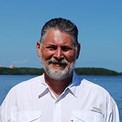 |
|
Thanks for your continued support and interest,
Clay Porch, Ph.D
Southeast Fisheries Science Center Director
clay.porch@noaa.gov
|
|
|
U.S. Scientists Integral to Sustainable Management of Atlantic Tunas
NOAA Fisheries Evaluates its Recreational Fishing Effort Survey
NOAA Fisheries conducted a pilot study on our recreational Fishing Effort Survey. The study is part of our commitment to continuous improvement and to producing quality recreational fishing data. These preliminary results suggest that the order of the questions in the survey may lead to overestimation of fishing effort, though a more robust study is necessary to confirm findings. It will be implemented in 2024. |
|
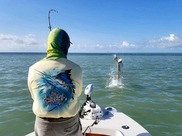 |
Climate Regional Action Plan in the Southeast
We outlined our priorities over the next 3 years in managing our fisheries, protected and endangered resources, and their associated habitats. The Plan is designed to increase production, delivery, and use of scientific information needed to fulfill NOAA Fisheries’ mission in a changing climate. The information will help NOAA, stakeholders, and communities that depend upon marine life prepare for, and respond to, climate-related impacts. |
|
 |
Listening Session to Discuss Gulf of Mexico Shrimp
NOAA Fisheries held a listening session for Gulf of Mexico shrimpers including captains, permit holders, and deckhands. The goal of this session was to generate local ecological knowledge on the Gulf of Mexico shrimp fishery. |
|
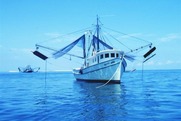 |
An Eventful Marine Mammal and Seabird Survey in the Gulf of Mexico
|
Scientists completed this 2-month long offshore survey with quite a few marine mammal and seabird sightings and acoustics highlights. This vessel survey is a joint effort between the Southeast Fisheries Science Center and U.S. Fish and Wildlife Service. This survey aims to assess outcomes of restoration efforts in the Gulf of Mexico. Learn more about this research trip through our multi-post blog series.
|
|
 |
An Internship Studying pH in Salt Marshes to Better Understand Oyster Growth
This 3-part blog series gives a snapshot of pH variability in salt marsh ecosystems to better understand the optimal pH range for oyster growth. The goal is to help inform site selection for oyster aquaculture and restoration efforts where oysters will grow the largest and fastest. In this series see what Clöe Lemaire’s project entailed, the project's layout, and read her main takeaways. |
|
 |
Smalltooth Sawfish and Climate Change: Impacts of Habitat Loss on Range and Distribution
Climate-related impacts such as warming ocean temperatures, rising sea levels, unpredictable storms, and more severe flood and drought cycles pose significant threats to the smalltooth sawfish (especially juveniles) because of their effects on preferred sawfish habitat. The main threats to smalltooth sawfish include habitat loss due to coastal development and death due to direct and accidental capture in fisheries. This was a collaborative post led by NOAA Fisheries’ Office of Protected Resources. |
|
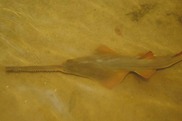 |
New Collaborative Research Will Improve Stock Assessments and Ecosystem Science
NOAA’s RESTORE Science Program will support the Southeast Fisheries Science Center and partners to collaborate on two new projects to improve the accuracy of stock assessments and update ecosystem modeling capabilities in the Gulf of Mexico. These projects are part of $16.8 million in RESTORE funding to conduct collaborative ecosystem science research that will be used by natural resource managers in the Gulf of Mexico. |
|
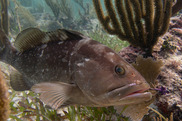 |
Nomination Period Is Now Open for the Marine Fisheries Advisory Committee
NOAA Fisheries seeks nominations to fill vacancies on the Marine Fisheries Advisory Committee, an advisory group that researches, evaluates, and provides advice and recommendations to the Secretary and NOAA on agency policies, activities, science, conservation, and regulatory programs critical to the mission and goals of NOAA Fisheries. Committee members are highly qualified, diverse individuals with experience in fisheries; the seafood industry; marine resources management and conservation; and human dimensions. Nominations are due by December 15, 2023. Learn more. |
|
 |
|
|
Meet Matthew Johnson, Habitat Ecology Branch Chief
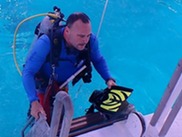 |
|
Matthew helps advance habitat science and connect habitat ecology to fishery management. He leads several research projects including the mapping of coral reefs along the Florida reef tract and examining the habitat-related impacts of expanding mariculture farms in the Gulf of Mexico. Meet Matthew. |
Meet Research Fishery Biologist, Jennifer Doerr
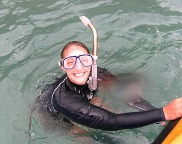 |
|
Jennifer, a jack of all trades, develops and conducts projects that incorporate habitat ecology and community dynamics to assess effects on abundance and distribution patterns of fishery species. She has been focused on changes to estuarine communities due to the climate change-induced range expansion of black mangroves in the northern Gulf. Jennifer is heavily involved in queen conch research and continues to pursue projects that will contribute to our knowledge and management of the species. Find out what else she does. Meet Jennifer. |
Meet Observer Coordinator, Kate Walter
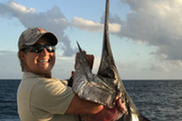 |
|
Kate Walter, a coordinator for the Reef Fish and Shrimp Observer Program, coordinates many aspects of getting observers on to commercial fishing vessels in the Southeast Region. She teaches safety, data collection and sampling protocols, as well as reviews these data. Kate also speaks with vessel owners and captains to gauge fishing efforts. Kate is also involved with research that is focused on enhancing artificial intelligence and machine learning based on the Gulf of Mexico shrimp fishery. Meet Kate. |
|
|
|
The mission of NOAA's Southeast Fisheries Science Center is to provide the scientific advice and data needed to effectively manage the living marine resources of the Southeast region and Atlantic high seas.
Visit our website
|
|
|
|
|